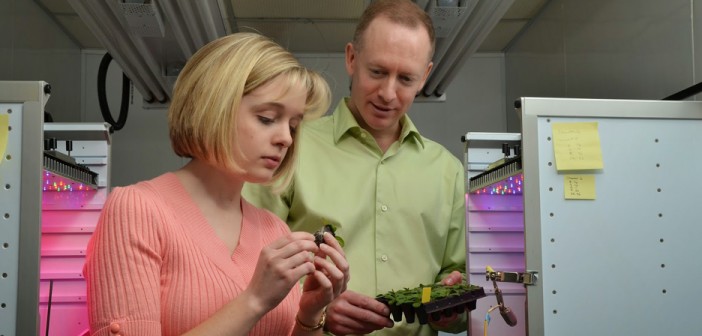Researchers at Michigan State University have used LED lights to produce compact flower and tomato seedling plugs as part of work to look at the effect light wavelengths can have on a variety of plant processes including growth, flowering, fruiting and postharvest quality.
According to an article at Hort Americas, horticulture professor Erik Runkle and floriculture/nursery production extension educator Heidi Wollaeger studied the impact the ratio of red to blue light can have on the production of annual bedding plant seedlings. They looked at the effects of red and blue light on impatiens, petunia, salvia and tomato plugs.
“These four species are very common bedding plants for U.S. growers,” explained Wollaeger. “They are key crops for their sales. The tomato plugs were being grown as vegetable transplants and not for production as greenhouse tomatoes for fruiting.
Wollaeger said all of the species grown under the red light dominant background with a certain amount of blue light displayed desirable plant growth responses. “These plants showed compact growth, thicker leaves and thicker stems,” she said. “As a general rule of thumb, growers should provide at least 10 µmol·m−2·s–1 of blue light if they are providing a red dominant environment to increase plant quality, which results in compact, well-branched growth. This treatment might reduce the need for plant growth retardants. If the light environment is being altered to include more blue light in a sole-source environment, stem elongation is reduced.”

The post Using LEDs to limit growth appeared first on Hort News.